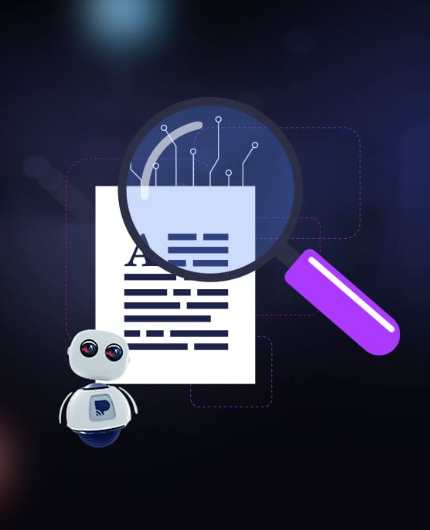AI-generated content is becoming increasingly common in various fields, from marketing campaigns to academic papers. As artificial intelligence becomes more integrated into our everyday lives, it’s natural to ask: who is behind that content? Is it human, or did a machine write it?
Recognizing AI-generated content is no small task. However, with the help of advanced AI detection tools, it’s easier than ever to verify whether a piece of writing is from a human or a machine. In this article, we’ll explore how these tools work, how to choose the right one for your needs, and highlight the best AI detection platforms currently available.
What Are AI Content Detection Tools?
AI content detectors, also known as AI checkers or AI detectors, are specialized software designed to assess written content and determine whether it was generated by artificial intelligence. These tools are particularly valuable for publishers, educators, and businesses aiming to ensure the originality and authenticity of their content.
The technology behind these tools generally relies on two main methods: statistical classification and watermark recognition. Statistical classification uses machine learning algorithms to detect AI writing patterns such as word predictability, sentence length, and overall style. Watermark recognition, on the other hand, identifies hidden signals embedded in AI-generated content, although this method works only when the AI system uses watermarking.
Understanding the distinction between these methods is essential, as different tools excel in different situations. For example, watermarking may be highly effective for certain AI models but won’t work if the text doesn’t contain those hidden signals.
How Does an AI Detector Work?
AI detectors work through one of three methods: statistical analysis, machine learning classification, or watermark recognition.
- Statistical Analysis: This method examines the predictability of words and sentence patterns. AI-generated text tends to follow smoother and more optimized patterns compared to human writing, which is typically more varied.
- Machine Learning Classification: These tools are trained on vast datasets containing both human and AI-generated content. Over time, they learn to detect subtle cues, such as sentence structure and vocabulary choices, that distinguish human and machine writing.
- Watermark Recognition: Some AI systems embed invisible patterns into the text they generate. Watermark detectors can identify these patterns, making detection more accurate when supported by the specific AI system.
By understanding how each method works, you can better choose the tool suited to your needs.
What’s a Good AI Detection Score?
AI detection tools often use a percentage score to indicate the likelihood of AI authorship. A score of 0-30% typically suggests human authorship, while scores between 30-70% are inconclusive, and anything above 70% indicates a high probability of AI involvement.
It’s important to interpret these scores cautiously. Certain writing styles, especially formal or repetitive ones, may cause human-written text to resemble AI-generated content. Therefore, these scores should serve as a guide, not a definitive answer.
Key Factors to Consider When Choosing an AI Detector
When selecting the best AI detection tool, you should consider the following factors:
- Accuracy: A good AI detector should accurately distinguish between human and AI-generated content without flagging human-written text unnecessarily. Look for tools that provide transparent detection methods and performance benchmarks.
- False Positives: One of the biggest challenges with AI detection is the risk of false positives—where human-written content is incorrectly flagged as AI-generated. High-quality tools minimize this risk, especially in critical areas like education or journalism.
- Reliability and Uptime: Consistent performance is essential, especially for businesses that need to process large volumes of content. Look for tools that offer minimal downtime and stable performance.
- Ease of Use: The best AI detectors should be user-friendly, allowing easy integration into your existing workflows. Features like drag-and-drop uploads, browser extensions, and batch scanning make detection faster and more efficient.
- Integration Options: For teams that work with content management systems (CMS) or learning management systems (LMS), look for tools that offer API integrations or plugins to streamline the process.
The Best AI Detection Tools
Here are nine highly rated AI detection platforms, each excelling in different areas:
- Originality.ai – Known for its high accuracy, especially with GPT-4 content. It’s ideal for agencies, SEO teams, and academic institutions. It offers a flexible pay-as-you-go plan and robust features like plagiarism checks and content history tracking.
- Copyleaks – Excellent for educators and institutions, Copyleaks offers a combined plagiarism and AI content detection service. With support for over 30 languages, it’s well-suited for multinational use. It integrates with LMS systems like Moodle and Blackboard.
- GPTZero – A popular open-source AI detector that became famous for its simple and clear logic. It’s best suited for educators, journalists, and casual users. GPTZero offers free access and is continuously improved by the open-source community.
- Turnitin AI Checker – Turnitin, renowned for plagiarism detection, now offers AI detection as part of its suite. It’s ideal for academic environments, providing detailed analyses of student submissions.
- SurferSEO AI Detector – Great for digital marketers and content strategists, SurferSEO integrates its AI detection tool into its broader content optimization platform, offering seamless checks alongside SEO and readability analysis.
- QuillBot AI Detector – QuillBot is a free, easy-to-use tool with no sign-up required. While it’s best for quick checks on shorter content, it may not be as reliable for more complex documents.
- Leap AI Detector – Known for its simplicity, Leap is ideal for casual users. It works well for detecting Claude-generated content but has shown some inconsistencies with GPT-4 and Gemini texts.
- Winston AI Detector – Winston uses a user-friendly interface to present AI detection results, making it a good choice for non-technical users, including educators and content reviewers. It’s particularly helpful for reviewing transcripts and guest submissions.
- Hemingway AI Checker – Tailored for content creators, Hemingway’s tool focuses on readability and style, helping you ensure that your content maintains a natural, human-like tone without the robotic feel often associated with AI-generated text.
Common Misconceptions About AI Detection
AI detection is far from flawless. No tool is 100% accurate, and even the best platforms may have difficulty with mixed or heavily edited content. Longer texts tend to be easier to analyze for AI patterns, while short snippets or social media posts may not provide enough data for reliable detection. Furthermore, the method used by each tool—whether it’s statistical modeling, watermarking, or machine learning—can affect its accuracy.
It’s also important to note that some tools use classifiers differently, meaning results may vary. As AI writing becomes more complex, detection tools may struggle to identify hybrid content or text that’s been extensively modified.
Conclusion
AI writing is becoming ubiquitous across industries, from education to marketing. Selecting the right AI detector depends on your specific needs, whether it’s ensuring academic integrity, verifying content for SEO, or simply checking articles for originality.
Originality.ai is a top choice for high-accuracy detection, especially in long-form content. Copyleaks is excellent for schools, while GPTZero offers a straightforward, free option for casual users. Tools like SurferSEO and Turnitin cater well to marketers and educators, respectively.
Ultimately, the best way to find the right detector is to test a few and compare their results. By understanding how each tool works, you’ll develop an intuition for which one fits your needs best.



